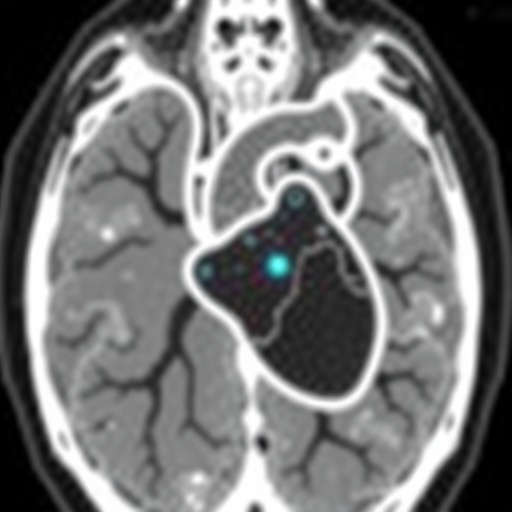In a remarkable advancement within pediatric cardiology, a recent study has highlighted the innovative use of temporary transvenous external pacing for cardiac magnetic resonance imaging (MRI) in a young patient. This emerging technique pushes the boundaries of traditional cardiac imaging methods, offering new hope for effective diagnostics in children with complex heart conditions. Cardiac MRI is typically limited by the challenges posed by arrhythmias, which can interfere with image quality. The introduction of external pacing represents a notable solution to this longstanding issue, underscoring the importance of interdisciplinary approaches in modern medicine.
The clinical scenario involved a pediatric patient known to have a history of cardiac rhythm abnormalities. These arrhythmias often pose significant diagnostic challenges, as the rapid heart rates can blur images and reduce the effectiveness of MRI scans. Traditional pacing methods come with their own risks and limitations, particularly when it comes to younger patients. The innovative use of temporary transvenous external pacing offers a less invasive solution while maintaining the necessary control over cardiac rhythm during imaging.
The procedure began with the careful placement of a temporary transvenous pacing lead. This technique allows medical professionals to stabilize the patient’s heart rhythm externally while simultaneously conducting the MRI. The pacing device is designed to provide precise electrical stimulation at a controlled rate, effectively restoring normal rhythm during critical periods of imaging. Without such intervention, cardiac MRIs in patients with persistent arrhythmias could yield inconclusive results, leading to compromised treatment plans.
As healthcare professionals prepared for the MRI, they were deeply aware of the implications of cardiac rhythm instability. In this particular case, the introduction of external pacing facilitated a clear and detailed imaging session. High-quality MRI images are essential for accurate diagnosis and treatment planning in pediatric patients with complex cardiac conditions. The study illustrates how transient pacing can enhance imaging quality—significantly improving the potential for diagnosis that will guide subsequent management and therapeutic avenues.
Furthermore, the clinical implications of this study reach far beyond this individual case. The successful incorporation of temporary transvenous external pacing into cardiac MRI protocols could revolutionize imaging strategies for many children facing similar challenges. This research highlights the need for a paradigm shift in how pediatric cardiac conditions are assessed and managed. Historically, the reliance on echocardiogram assessments limited the comprehensive evaluation of structural and functional heart abnormalities, necessitating innovative solutions.
Significantly, the study delves into the technical aspects that need careful consideration during the implementation of temporary pacing. For example, maintaining sterility during lead implantation is paramount, as any breach could lead to infections that complicate the patient’s condition. The pacing must be adjusted to achieve optimal effectiveness without causing undue stress on the myocardium. Careful calibration of the device ensures minimal discomfort while maximizing the utility of the MRI.
Moreover, the educational aspect of this research cannot be overlooked. Medical practitioners, especially those specializing in pediatric care, can learn invaluable lessons from the successes observed in this study. It reinforces the importance of collaboration across different medical specialties—particularly between cardiology, radiology, and anesthesiology. Bringing experts together not only enhances care but also fosters an environment for innovation and shared learning that can lead to new techniques and practices.
The potential impact of these findings extends to the development of protocols for future cases involving pediatric patients with suspected arrhythmias. Medicine thrives on evidence-based practices, and this study lays down a groundwork that could inform procedural guidelines. By documenting this successful intervention, future patients may benefit from enhanced imaging protocols, ultimately leading to improved outcomes.
Transitioning to external pacing technology will also necessitate ongoing research to determine the long-term implications of these procedures. Comprehensive studies aimed at understanding the risks and benefits of prolonged use of external pacing systems are vital. Healthcare systems must be proactive in implementing feedback loops that can monitor patient outcomes and refine practices based on observed results.
This study stands as a testament to the extraordinary capabilities of modern technology when applied thoughtfully within clinical settings. The integration of novel techniques enhances the potential for accurate diagnostics, which is especially vital in pediatrics, where early interventions can make significant differences in patient health and development. As medical science continues to advance, the challenges that once seemed insurmountable are being overcome by creativity, innovation, and collaboration.
The path of adapting transvenous pacing for use in conjunction with cardiac MRI represents only one of many potential future applications in child health. Researchers and clinicians are increasingly recognizing the need for adaptable solutions that cater to the unique physiological realities of younger patients. This study ignites discussions about future innovations and encourages the exploration of alternative methodologies that could further improve the experience of pediatric patients undergoing cardiac evaluation.
As feedback from this case study circulates within the medical community, it is likely that further refinements will emerge. The groundwork laid by this research can propel advancements in customized patient care, offering tailored interventions that rise to complex clinical challenges. Physicians now have a new tool in their arsenal, illuminating paths toward informed diagnoses and optimized treatment strategies.
In summary, the application of temporary transvenous external pacing for cardiac MRI in pediatric patients is a promising advancement in the realm of cardiology. This innovative approach not only reinforces the existing methodologies but also marks a significant step forward in addressing the unique needs of young patients facing cardiac challenges. The implications of this study resonate deeply within the field, hinting at a future where precision medicine becomes the standard care model for all pediatric patients with heart conditions.
Subject of Research: Temporary transvenous external pacing for cardiac MRI in pediatric patients
Article Title: Temporary transvenous external pacing for cardiac MRI in a pediatric patient.
Article References: Rokni, M., Naganawa, S., Piran, M. et al. Temporary transvenous external pacing for cardiac MRI in a pediatric patient. Pediatr Radiol (2025). https://doi.org/10.1007/s00247-025-06325-z
Image Credits: AI Generated
DOI: https://doi.org/10.1007/s00247-025-06325-z
Keywords: Pediatric Cardiology, Cardiac MRI, Temporary Pacing, Arrhythmias, Medical Innovation, Diagnostics, Interdisciplinary Approaches.




